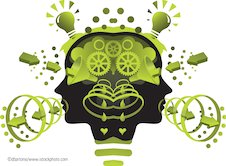Engaging young minds: Part six
Add to My Folder
The final part of this series discusses how understanding memory and thinking can improve children’s learning

Previous articles in this series looked at how a stimulus causes brain cells to make connections with other brain cells – the stuff of thinking. If that pattern of firing is strengthened it will form a single memory, something called Long-Term Potentiation (or LTP).
Your memory of what you are reading now is a ‘working memory’. Long-term memories deep within the brain are like stored books or files. Short-term memories of the moment are like this current reading matter and are referred to as ‘working memory’. As we think about something and apply working memory, it may find its way to the longer-term store.
The ‘Simon’ memory game on the Learning Games for Kids website will stretch children’s working memories.
Cognitive scientist, Daniel Willingham, writes: ‘Your brain lays its bets this way: If you don’t think about something very much, then you probably won’t want to think about it again.’ He suggests that the way to secure a piece of learning is to get children thinking about it. That prompts the brain to rate it as worth remembering.
In some ways it seems like stating the obvious, but we should enter into teaching asking ourselves: What will my learners think? Four questions we can ask ourselves before a lesson are:
Published 14 May 2010
Reviews
You need to be signed in to place a review.